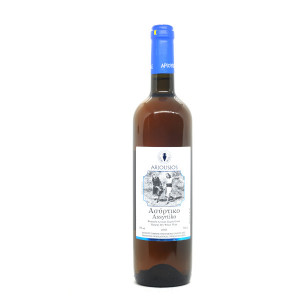Greece
Between the XIII and XI century BC, long before there was only one vine in the most famous wine regions in the world today, in Greece, viticulture was at its peak. The classic wines of ancient Greece were definitely great wines for their time, so much to be quoted by Hippocrates, Homer, Paltone, Pliny, and Virgil. The Greeks then taught the Romans the secrets of viticulture and the Romans, in turn, spread this knowledge in France and other places of the empire. Today, it seems difficult to understand how a country, which boasts a millennial winemaking tradition, can now be an emerging viticultural reason. In fact, Greece has never stopped making wine, but in all these years the wine industry has been hindered by the Turkish government and political agitation. Only in the last decade some producers have started to produce quality wine and in a few years many of them have gained a reputation outside of Greece. Greece is located in southern Europe and has a typically Mediterranean climate with very hot winters and very hot summers, although the climate may be quite cold on the Peloponnese and Macedonia highlands as well. Under the pedological aspect, the soils in Greece are very variable, even if they dominate the limestone substrate. The islands have typically volcanic soils. The vine is cultivated a little everywhere, from low coastal areas to hills, river valleys to mountainous slopes. Indigenous vines are about 300, only Italy has more indigenous grape varieties. Among the white grape vines deserve to be remembered the Assyrtiko, cultivated on many Aegean islands and light, fresh and fruity wines. The Savatiano, cultivated in Attica and used to produce the traditional Retsina. In the Peloponnese we find the Roditis vine which is expressed both in red berry and white berry.A red berry from complex wines with caramel flavors, while in wines produced with the white berry are simpler, fresh and spicy. The Rodola, cultivated on some delicious, dried, lemon-flavored islands with lemon notes. We find the rare Moschofilero, which produces an aromatic wine, and Malvasia, which certainly had more luck outside of Greece. Among the red berry vines the Agiorgiotiko, named in honor of Saint Girgas, is cultivated in the Peloponnese, with deep wines and soft tannins. Then we have Xynomavro, cultivated in northern Greece, with which we produce rich and robust wines. In Patras grows the cultivar Mavrodaphne and its grapes produce dried, sweet and fortified wines. Wines in Greece are divided into two distinct categories: High Quality Origin Designation (OPAP) and Controlled Designation of Origin (OPE). The two categories include Riserva and Gran Riserva wines that differ in their maturation time. For Red Wines the maturation period is 3 years with a minimum of 6 months in barrels (for white two years and 6 months in barrels), while for the Red Reserves in the period is 4 years and 2 years in barrel (for white three years with a minimum of 12 months in barrels). Epitrapezios Oenos are table wines. Some of the most famous Greek wine regions are: Macedonia and Thrace, which are located in the northern part, with mountainous terrains and a cool climate. The most cultivated vines are the Xiromavro and the Negoska. We find then the Peloponnese area which is a large peninsula southwest of Greece with a different climate and soil. The most important districts are those of Nemea, Patras and Mantinia. Nemea is certainly the most important district in southern Greece and is the realm of the Agiorgitiko grape with which the "Blood of Hercules" is produced. Other noteworthy wines are the red Nemea, the dry white Patras and Mantinia and the sweet wines Mavrodaphe de Patras and Muscat de Patras. The island of Crete produces both red and white wines based on vines such as Kotsifali, Mantilaria and Liatiko. It produces a liqueur wine with Daphanes grapes. On the island of Samos, a world-famous sweet wine is produced, which is the Samos Moscato produced with grapes from Muscat à Petits Grains. In continental Greece, Retsina is produced with Savatiano grapes. The characteristic of this wine is that it is added resin to wine that gives a taste and a penetrating scent.





